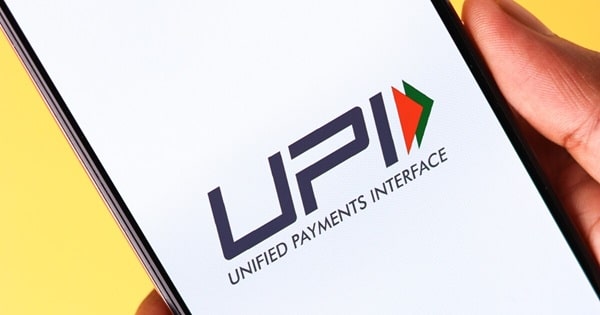UPI or Unified Payments Interface has offered a revolutionary change in the process of financial transactions in the recent years. In India, the inception of the UPI payments has created a wide plethora of benefits. Highly convenient and fast, the UPI payment has captured the attention of all kinds of people, from the high stake businesspersons to the middle class family-persons. Because of the use of the UPI payment process, need of paperworks has decreased to a great extent. The transactions are possible outside the banking hours, so one does not have to hurry in the process. Obviously it is a very convenient and much used option. However, there are some disadvantages of the process as well. Here we will be discussing about the both so that you can make your mind about whether to use the process or not.

Advantages of Using UPI
1. Convenience:
Customer and retailer convenience is unparalleled with UPI. Since transactions take seconds with a few clicks, users no longer require cash or wait in long ATM or bank branch lines. UPI payment gateway encrypts all transactions, removing the need to input personal financial information on risky websites.
2. Enhanced Security:
UPI stresses security, giving users peace of mind throughout transactions. Two-factor authentication and AES encryption protect UPI financial data from hackers. Biometric authentication prevents identity theft and fraud, enhancing user confidence.
3. Rising Digital Payments Adoption:
UPI drives digital payments in India. Due to its user-friendly design and wide availability, UPI transactions surged from 0.1 billion in October 2016 to over 117.6 billion in February 2023, according to the National Payments Corporation of India. Digital payments reduce cash usage and enhance financial inclusion by connecting more individuals to banks. UPI simplifies money transactions. Mobile phone numbers or virtual payment addresses (VPAs) may be used to quickly transfer money to any bank account without remembering or typing extensive account info. This simplicity enhances user experience and encourages frequent and quick financial transactions.
4. Transaction costs:
UPI transactions are cheaper than conventional payment systems, making them attractive for little and large purchases. Users may enjoy transactions without exorbitant costs since they are inexpensive.
5. Lower transaction costs:
UPI significantly reduces online payment transaction costs. Banks provide UPI for free, unlike other digital payment networks. Cost-effectiveness decreases financial obstacles to accepting payments for organizations and individuals, making digital transactions more accessible and wide across socioeconomic groups.
Disadvantages of Using UPI
1. Enhanced Security and Fraud Prevention:
The process of UPI offers user data protection options. There are sophisticated security measures that help in the prevention of frauds as well. There is multi factor authentication option that is used in the process of fraud prevention. But the fact is that, in the past few years, the threat for cyber attacks have changed. Therefore, there has been an urgent requirement for security updating and strengthening.
2. Flexibility and Convenience:
UPI lets consumers start transactions anytime, anyplace, using their phones. UPI simplifies bank account transfers, bill payments, and shopping. UPI’s easy interface reduces paperwork and bank visits, streamlining payments for people and businesses. UPI transactions are real-time, ensuring speedy settlement and money availability. UPI’s versatility and convenience make it important for modern banking and trade, resulting in widespread adoption across demographics.
3. Cost-Effectiveness and Efficiency:
UPI transactions save money on transaction fees and operational costs compared to traditional payment systems. Since UPI is free, more people, including small businesses and individuals, may utilize it than other payment systems. UPI’s transaction processing efficiency speeds up settlements and decreases administrative expenses for organizations, enhancing operational and financial performance. UPI is a cost-effective payment alternative that may improve payment processes and boost development and innovation.
4. Financial Inclusion and Empowerment:
UPI promotes financial inclusion in that it provides modern banking and digital payments to the poor population. UPI can help unbanked Indians access and be part of the developing digital economy. Therefore, UPI will allow the integration of all sections of society in their financial transactional needs with an easily designed and widely available facility. Worldwide, UPI can facilitate fund transfer and global financial integration. This is because UPI operates by interoperation with banks and payment systems.
5. Innovation and Evolution:
UPI’s agility and flexibility enable digital payment innovation, creating new products, services, and use cases. UPI stakeholders collaborate to enhance user experience and satisfy changing technology and customer desires. UPI innovates digital financial services with voice-based instructions, biometric verification, and contactless payments. UPI will change payments and the digital economy for years with innovation and collaboration.
Conclusion
Obviously, along with the technological advancements and with the rising demand of a smarter financial service, processed of digital payments are taking the center stage. The UPI payment process is a big respite from all the paper worked processes where lots of time used to get wasted. In spite of the few disadvantages mentioned, it can be affirmed that the whole process of UPI is under robust security measures presently and it offers a lot of flexible options. Be it for the individuals or for any businesses, the UPI transfers have been proven an extremely useful option presently. The system has also been hugely successful in empowering a large part of undeserved population and fostered a culture of innovation. In the wholesome development of the country, UPI system is playing a very important part.

